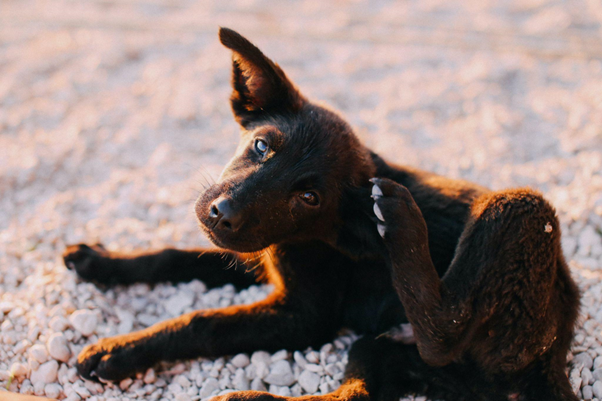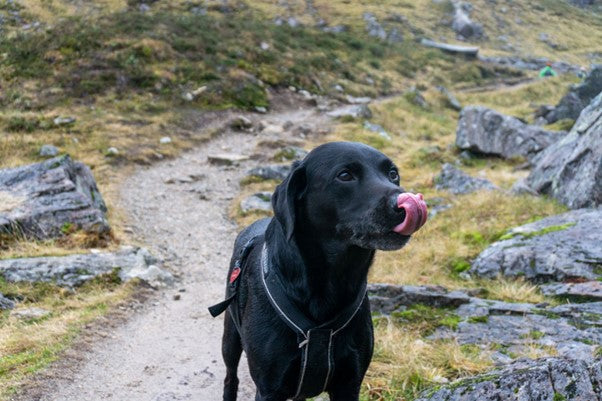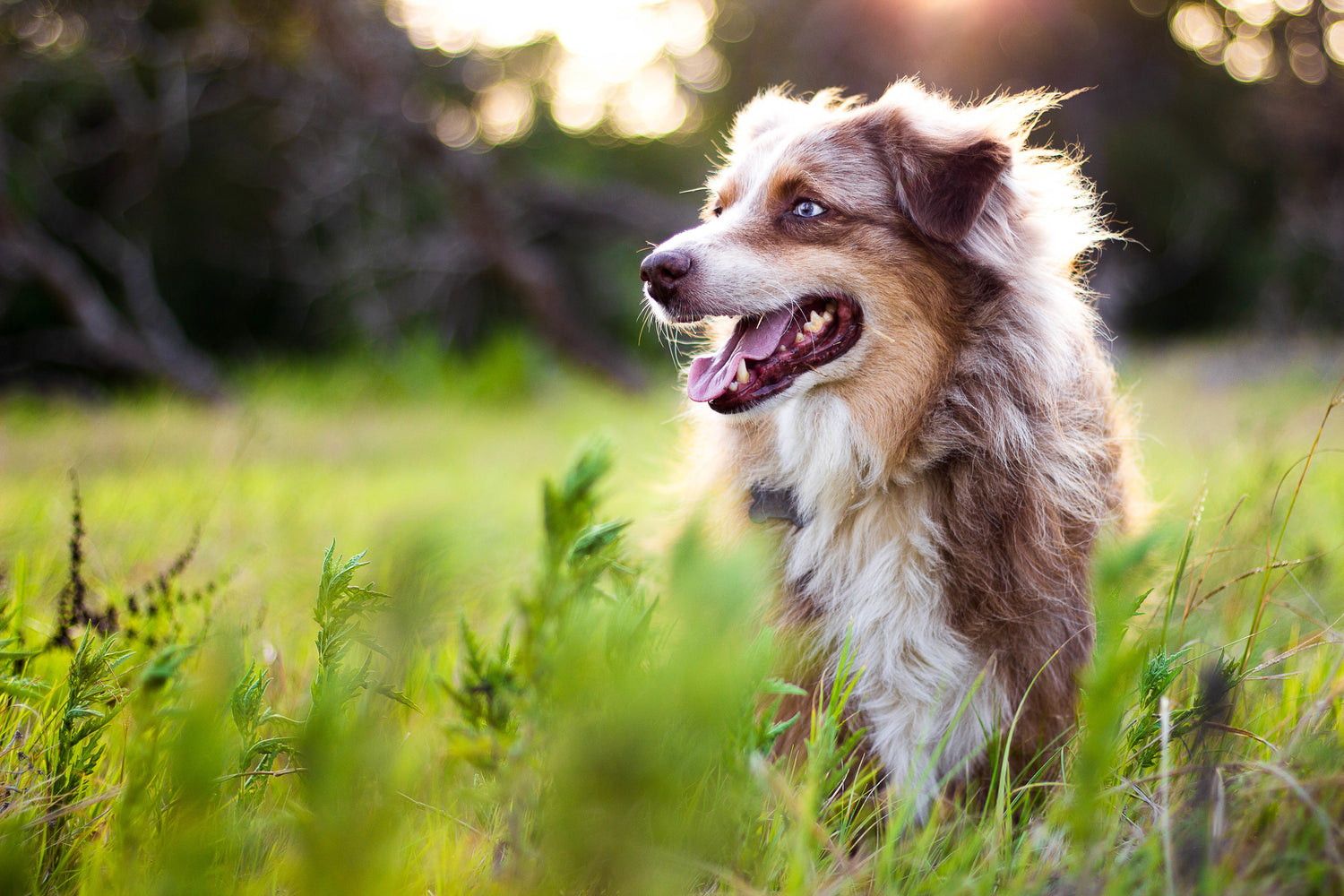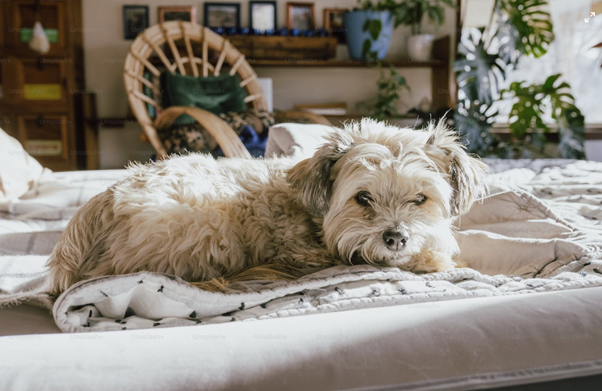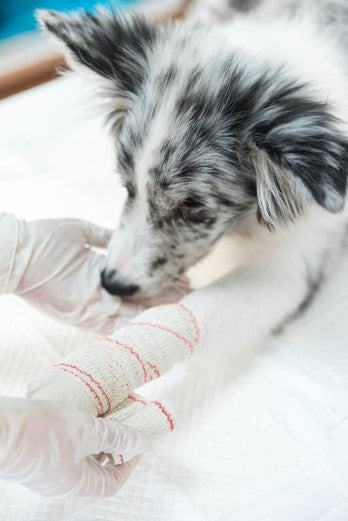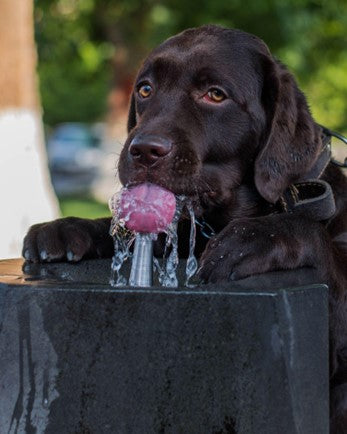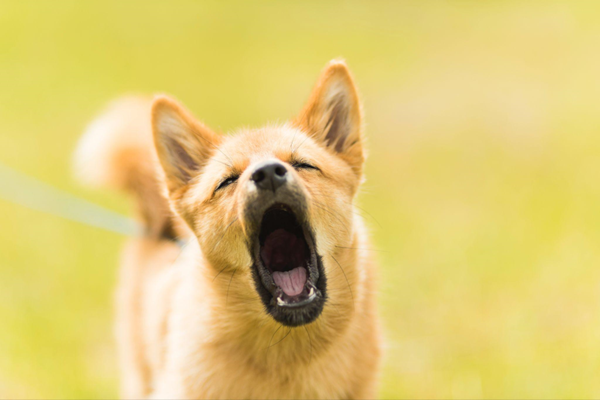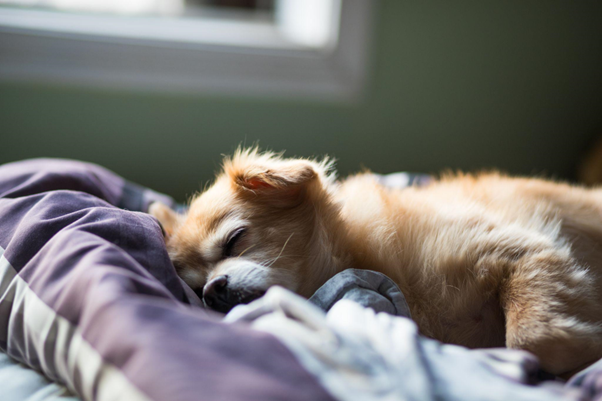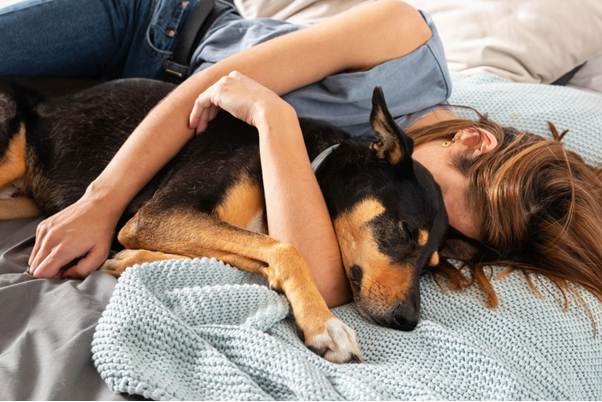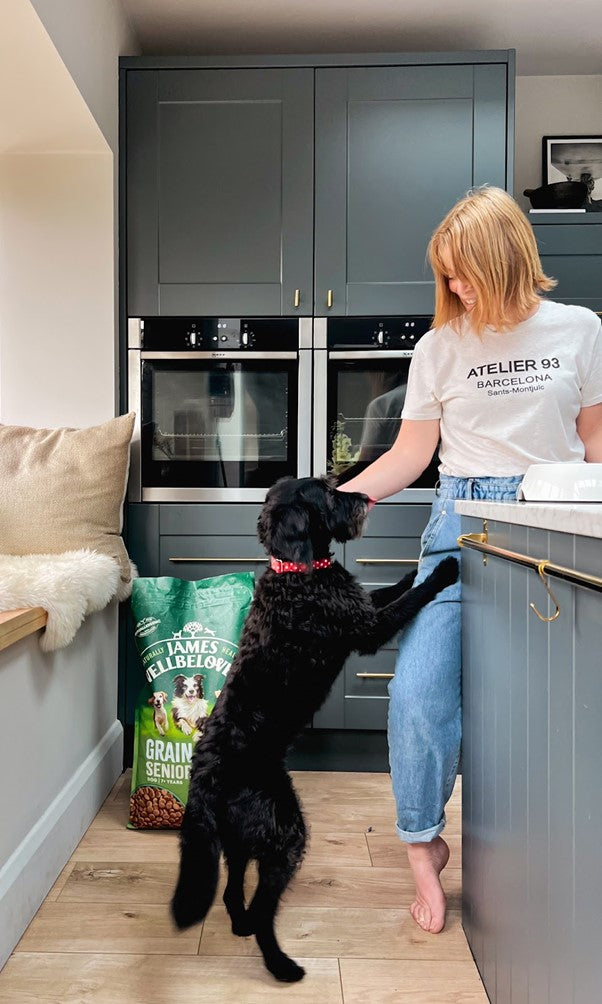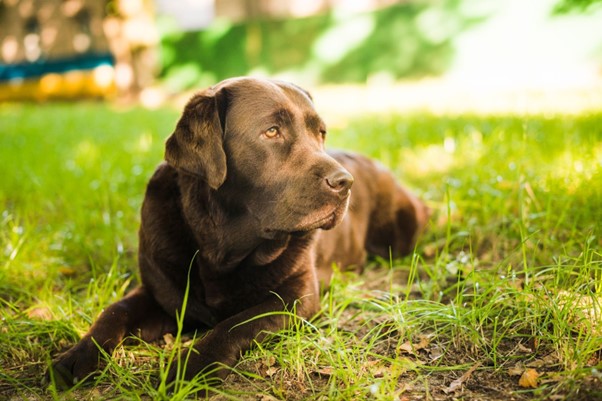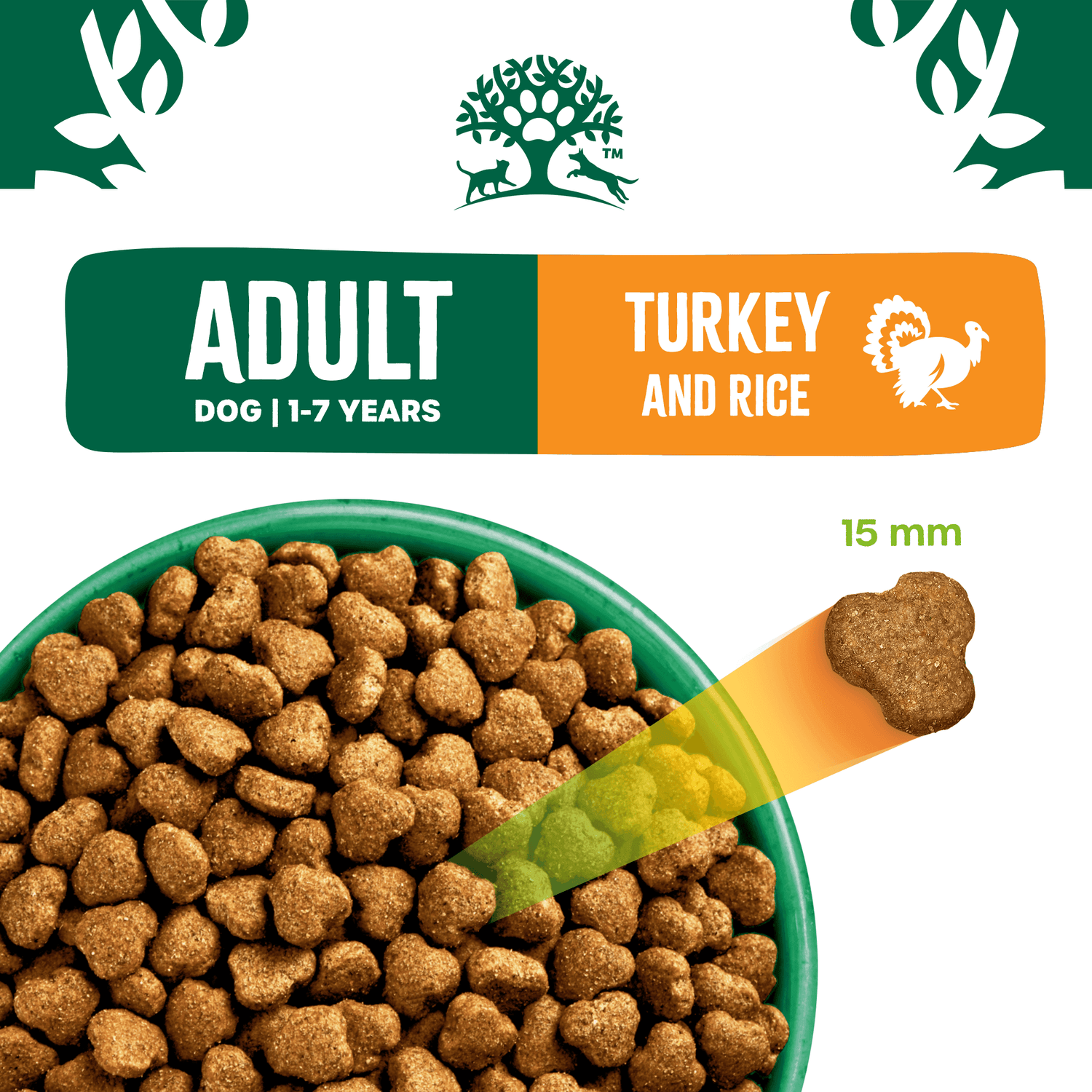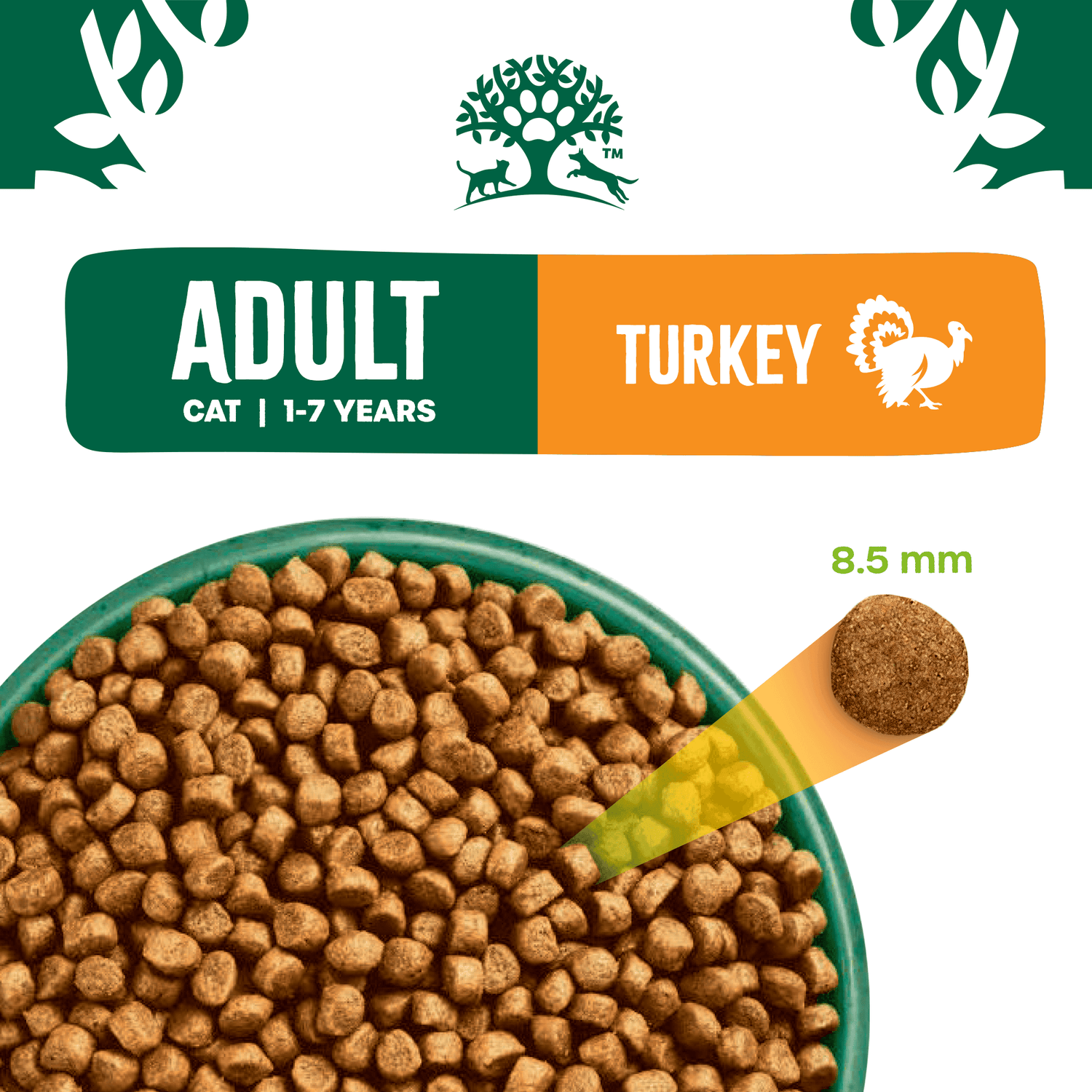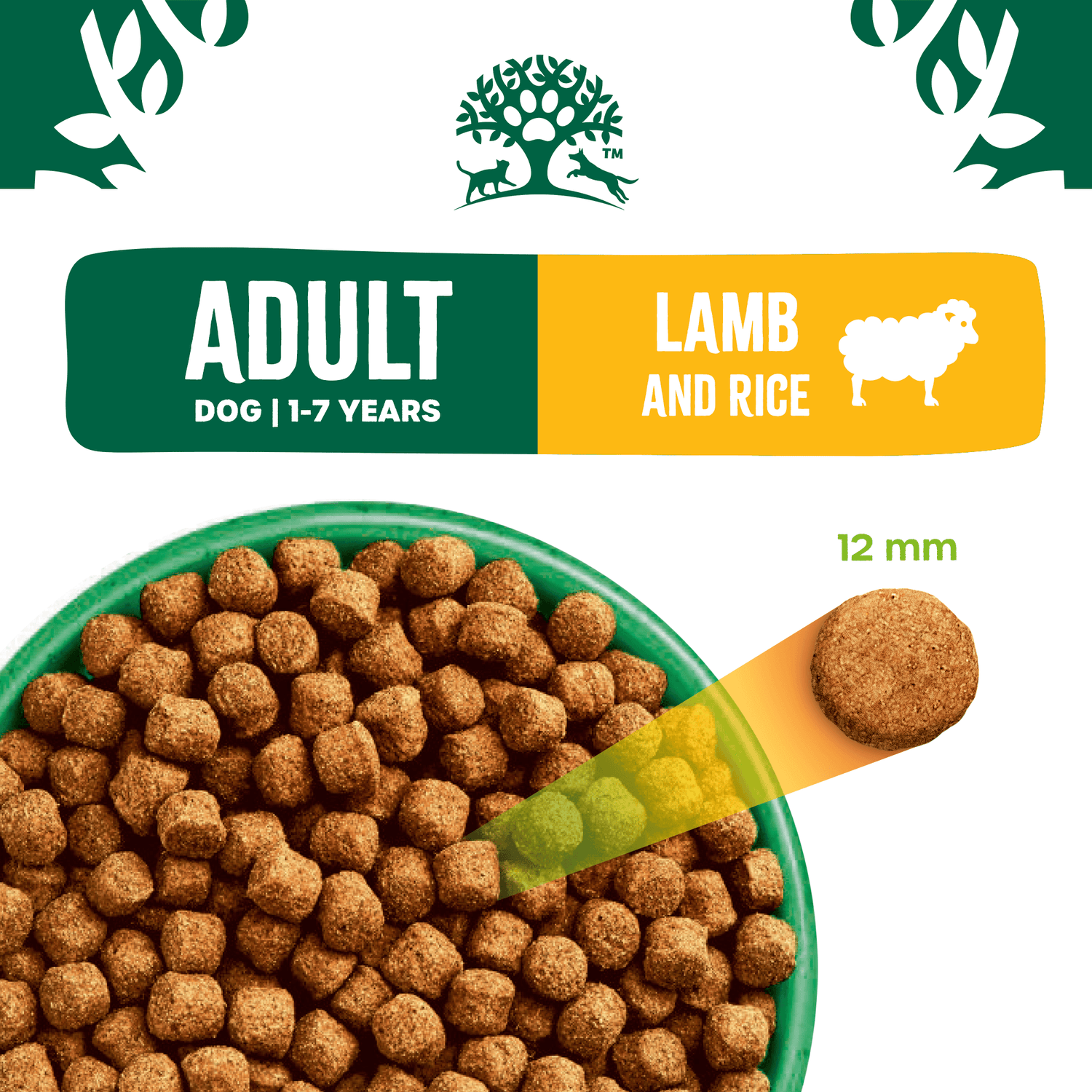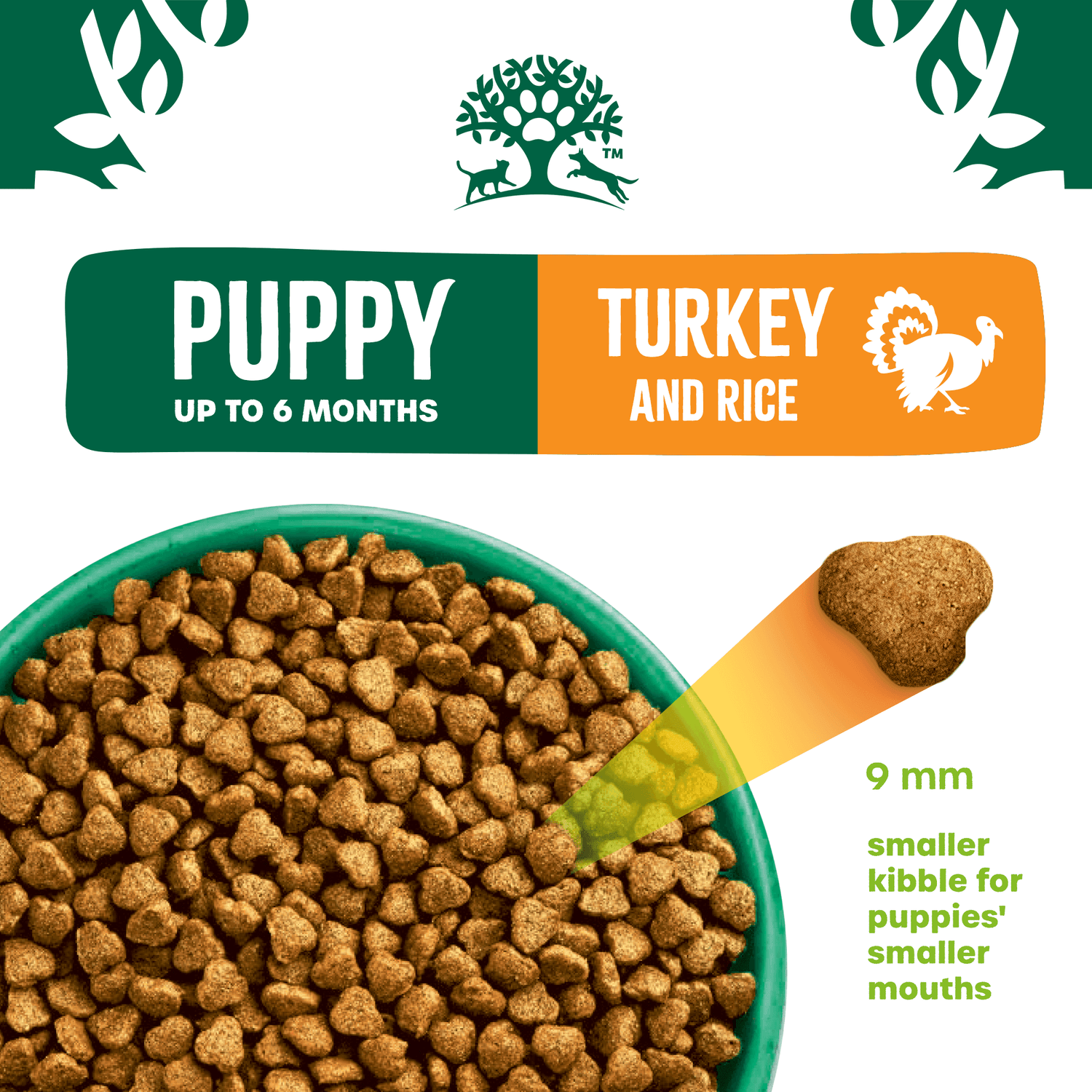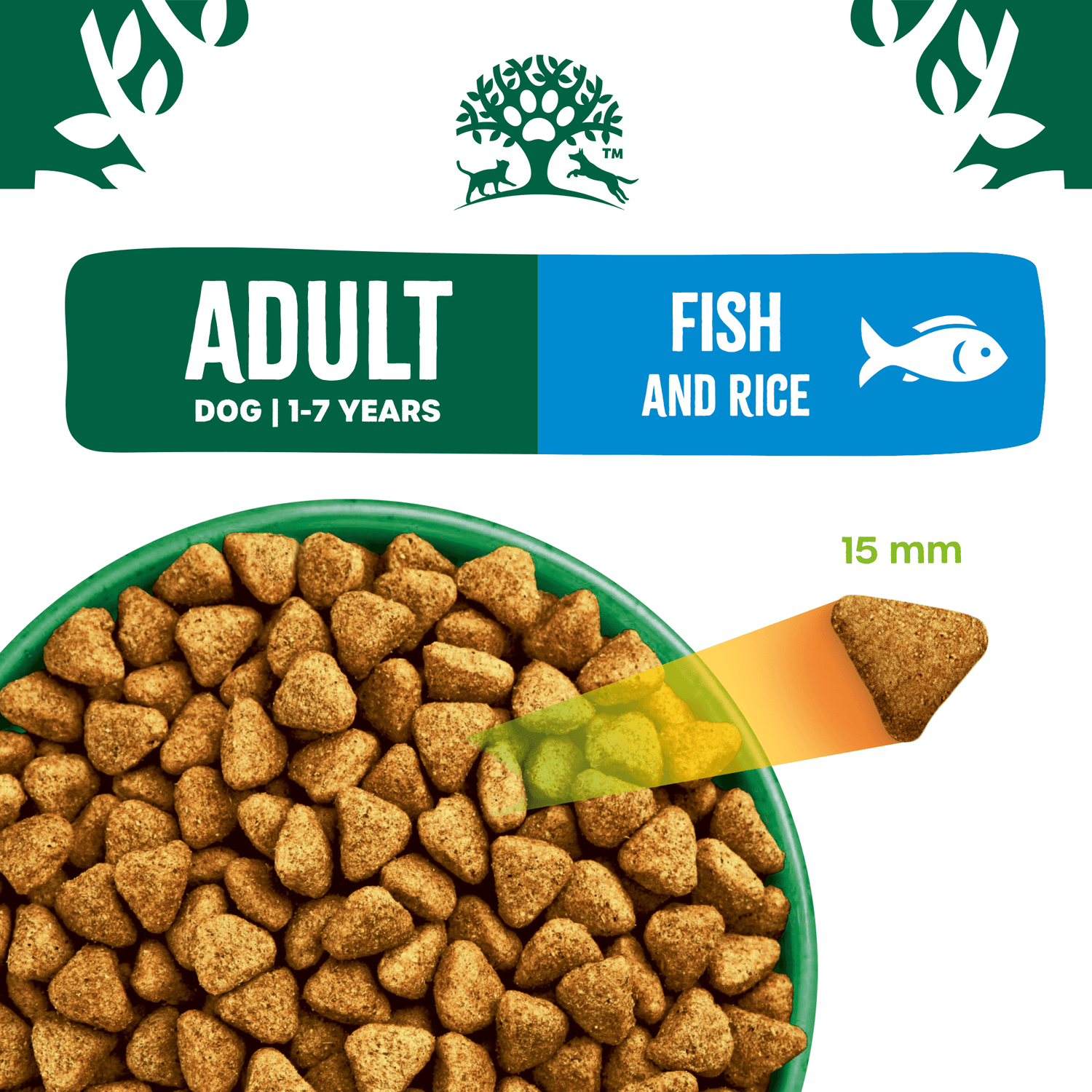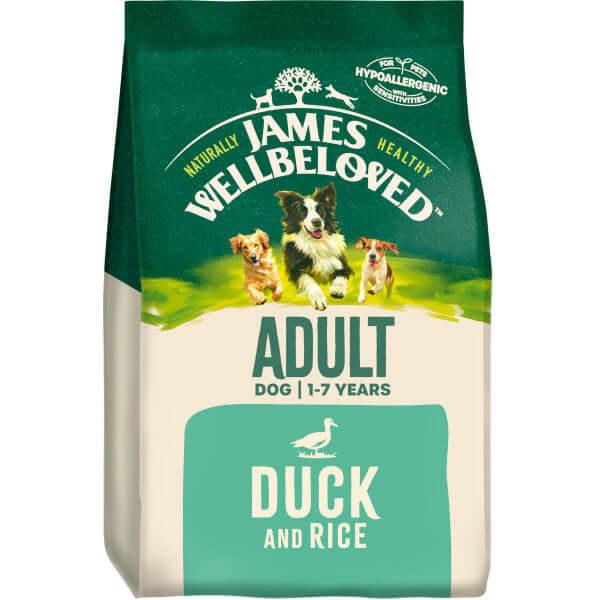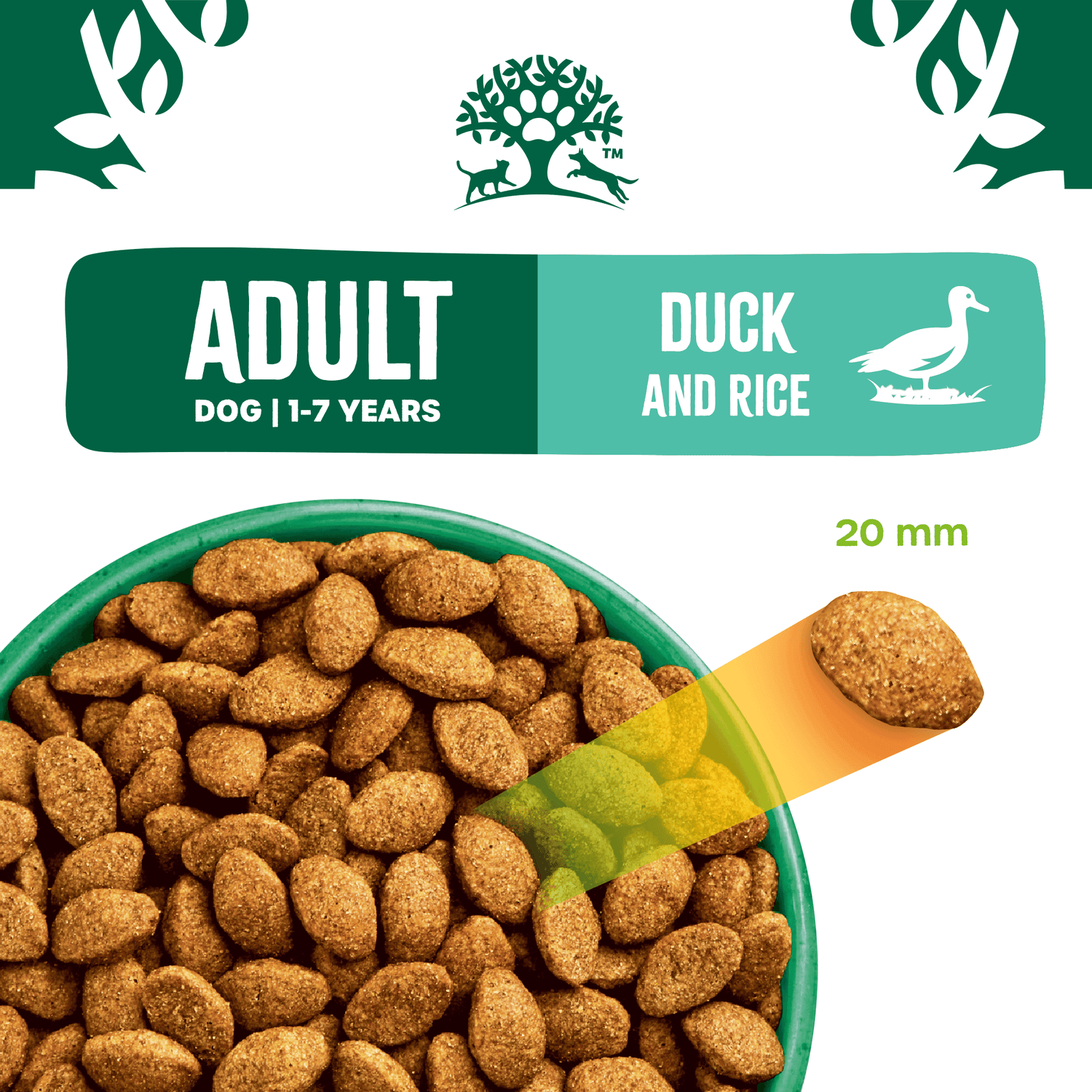How to help your dog with separation anxiety
Separation anxiety is an incredibly distressing condition for both dog and owner. It is increasingly common for dog owners to return home from a day of work and find that their pet has urinated inside, annoyed neighbours with excessive howling and barking, or even gouged marks into furniture and walls. This can be extremely worrying and frustrating, especially if you are unsure of how to help a dog with separation anxiety. It is painful to see our beloved canine companions in such a state of distress and natural to want to help them. Here, James Wellbeloved provides guidance on the symptoms and causes of separation anxiety, as well as outlining how to help a dog with this condition.
WHAT CAUSES SEPARATION ANXIETY?
Separation anxiety is extreme distress caused to your dog by being left alone. Historically this was a rare condition; however, the increasing number of households in which both parents work and there is often no one at home in the day has led to an increase in the number of cases. It is theorised that separation anxiety is linked to survival instincts that dogs needed when living in the wild. If a puppy was to be separated from their mother, making noise would enable them to be found again. Even an adult dog in nature would be more in danger when separated from their pack, and so it is logical that they would be distressed.
SYMPTOMS OF SEPARATION ANXIETY
The most common symptoms of separation anxiety are destructive behaviour, excessive vocalisation, and urinating or defecating inside the house. However, it is important to remember that these behaviours are not always indicative of separation anxiety. Pet owners assuming this has often led to dogs being misdiagnosed as suffering with the condition. If your pet is struggling with separation anxiety, it is likely they will also exhibit other, less obvious signs when left alone. These include lack of appetite, panting, excessive salivation, and attempts at escape.
ALTERNATIVE CAUSES OF SEPARATION ANXIETY SYMPTOMS
Before deciding your dog has separation anxiety, it is important that you consider some alternative causes of their symptoms. Urination and defecation within the home can be a sign of incomplete house training or even physical incontinence, as well as separation anxiety. If your dog exhibits this behaviour when you are in the house and not just while you are out, it is likely that separation anxiety is not the cause. Urination or defecation outside of your pet’s normal habits are also symptoms of digestive illness and urinary tract infections, so you should consult a vet if they begin suffering with this. Destructive behaviour can also be a sign of boredom, rather than just the result of separation anxiety. To distinguish, you should observe which areas your dog is targeting. Dogs with separation anxiety will often damage doors, windows, and other areas where they might escape, while more generalised targeting indicates your dog is bored or has an excess of energy to use. Finally, excessive vocalising can be caused by environmental stimuli, like other dogs or perceived intruders (such as a postman). You should monitor your dog while you are in the house to see if they respond to any such stimuli, and you can even try using a camera to watch them while you’re out. This will help you to determine the cause of their howling and barking. If you think that your dog is suffering with separation anxiety, you should consult a vet or animal behaviourist for a proper diagnosis.
HOW TO HELP A DOG WITH SEPARATION ANXIETY
Treating dogs that already have separation anxiety can be more difficult, which is why prevention is often the best method. It is best if you can get your dog used to being alone for short periods of time from an early age, and so you should practice leaving them alone as soon as you get them. Although it is tempting to spend all day cuddling our puppies, it is vital that they learn to be on their own. If this is not possible and you find yourself asking how to help a dog with separation anxiety, then you will need to consider the severity of your pet’s condition. If your dog is suffering with mild separation anxiety, you may be able to treat them with counterconditioning and a few changes to their routine. Moderate to severe cases will require more rigorous training to get your dog used to being alone, often with professional assistance from an animal behaviourist or vet. If training is ineffective, you may need to consider a change to your dog’s environment. This can mean putting your dog in day-care or even taking them into work with you.

COUNTERCONDITIONING YOUR DOG
Treating a dog with mild separation anxiety can usually be done with counterconditioning. This means teaching your dog to associate something they don’t like with something they do, such as tasty food. Start by leaving your pet on their own when they eat, so they begin to build an association between food and being alone. Also, try giving your pet a puzzle toy stuffed with food when you go out. Separation anxiety is normally at its worst for the first 40 minutes of your dog being left alone. The puzzle toy will give them something to focus on as well as a reward, so that they start to associate their being alone with a positive outcome. Be sure to remove the toy from them as soon as you get home though, so that they learn to associate this treat with being alone.
EXERCISING YOUR DOG
Always an important part of your dog’s routine, exercise is a great way of reducing their anxiety. If your dog gets some exercise before being left alone, this will help them to feel happier and reduce the anxious energy they have. Try taking your pet for a walk before you go out to work in the morning and see how this alleviates their symptoms.
DESENSITISING YOUR DOG
You should desensitise your dog to actions that signal you are about to leave. Picking up your keys or putting your coat on inform your dog that you are leaving soon, building their anxiety up. Try to help reduce your pet’s anxiety when they see these signals by picking your keys up and putting your coat on while staying in the house. Your dog has formed this link based on years of experience, so you will need to do this multiple times a day for a number of weeks to break the association.
TRAINING YOUR DOG TO BE ALONE
If your dog is suffering from a moderate or intense case of separation anxiety, the prior changes may not be enough to help them. Your dog will require intense training that builds their tolerance to being alone. This can be by as little as several seconds at a time, meaning the process can take weeks. It is important that your dog isn’t left alone for an extended period when you are training them. Dogs are highly social creatures that need lots of attention, so you should always minimise the time they spend alone. When performing this sort of training though, it is vital they are not left alone for extended periods at all. You should consider taking them into work or finding additional care for them when you cannot be with them. The difficulty of this training means that it is often best to seek advice from an animal behaviourist or vet for conditions of this severity. So, there we have James Wellbeloved’s guide to separation anxiety. If your dog is suffering with this condition, remember to be patient and that, as frustrating and sad as it may be for you, it is even more difficult for them. Do not scold your dog or punish them. It’s your turn to provide support.


